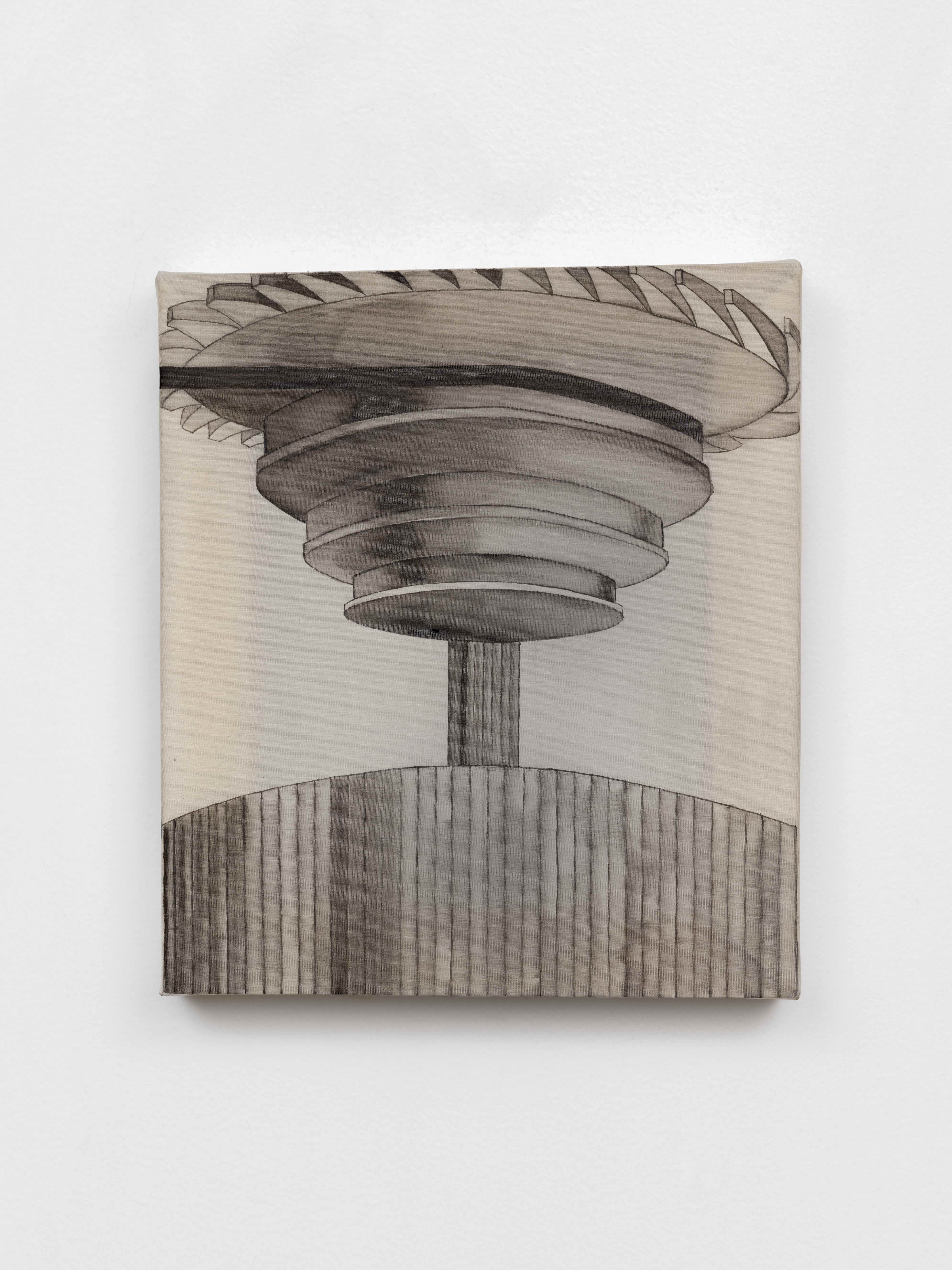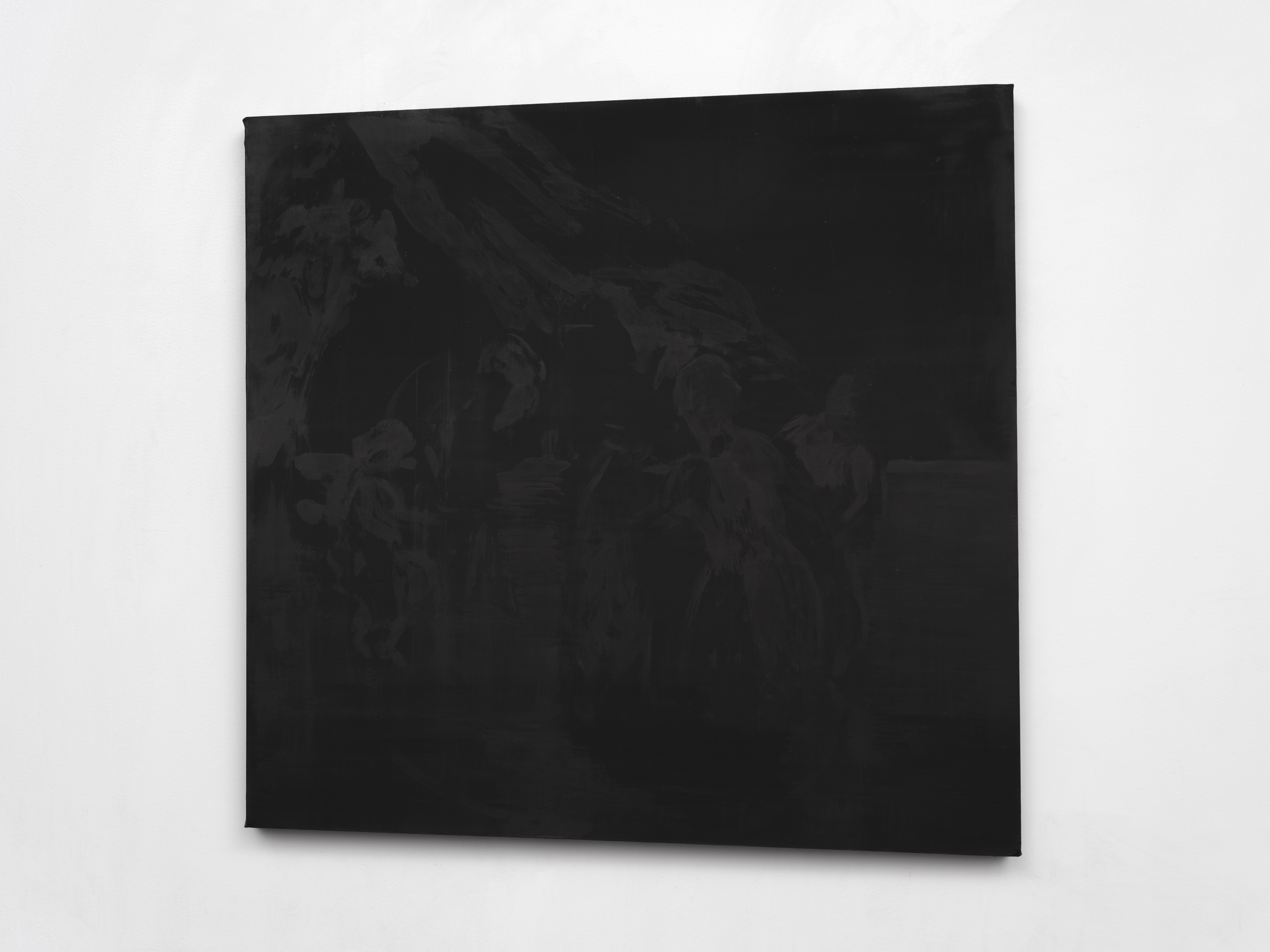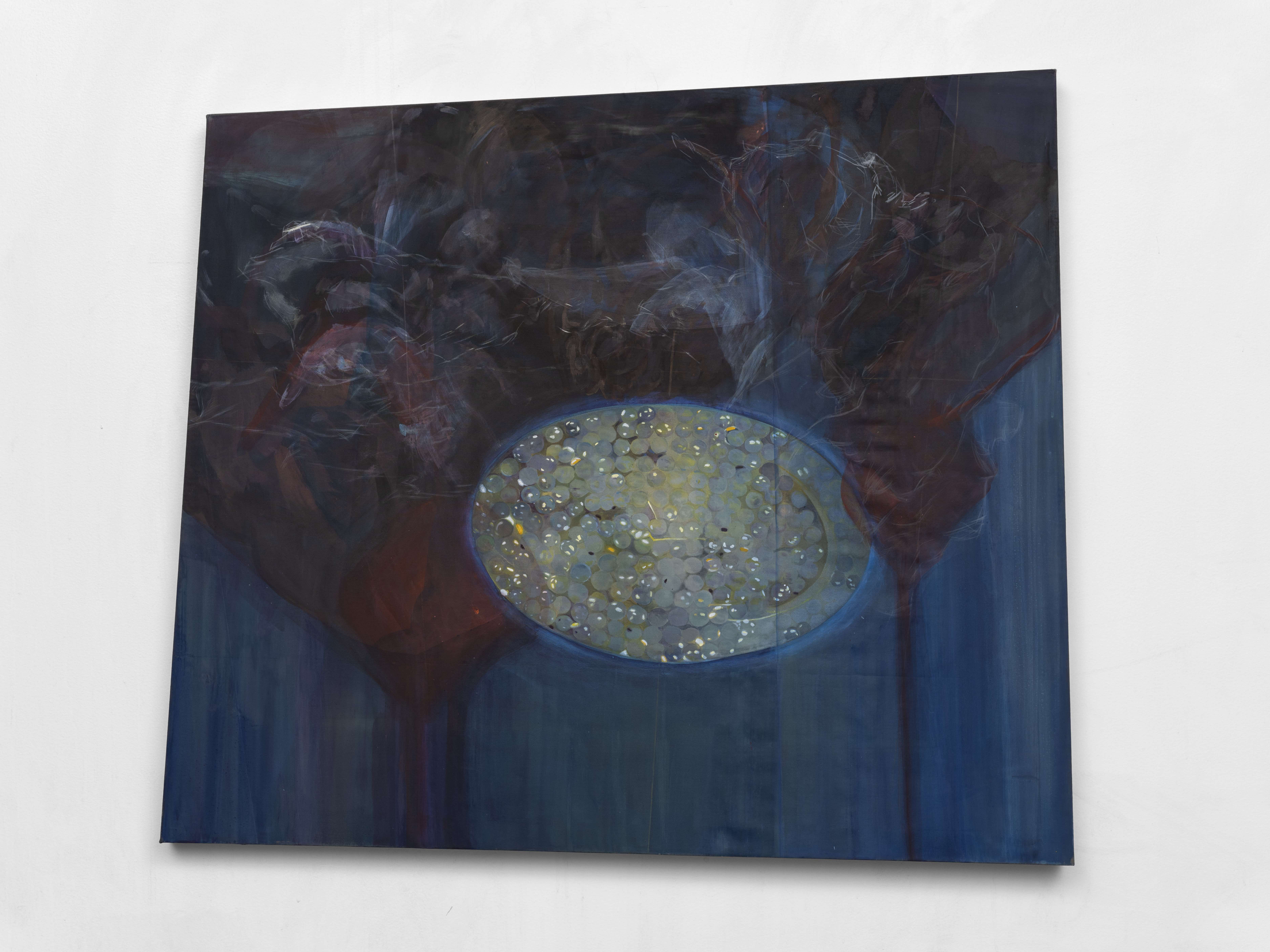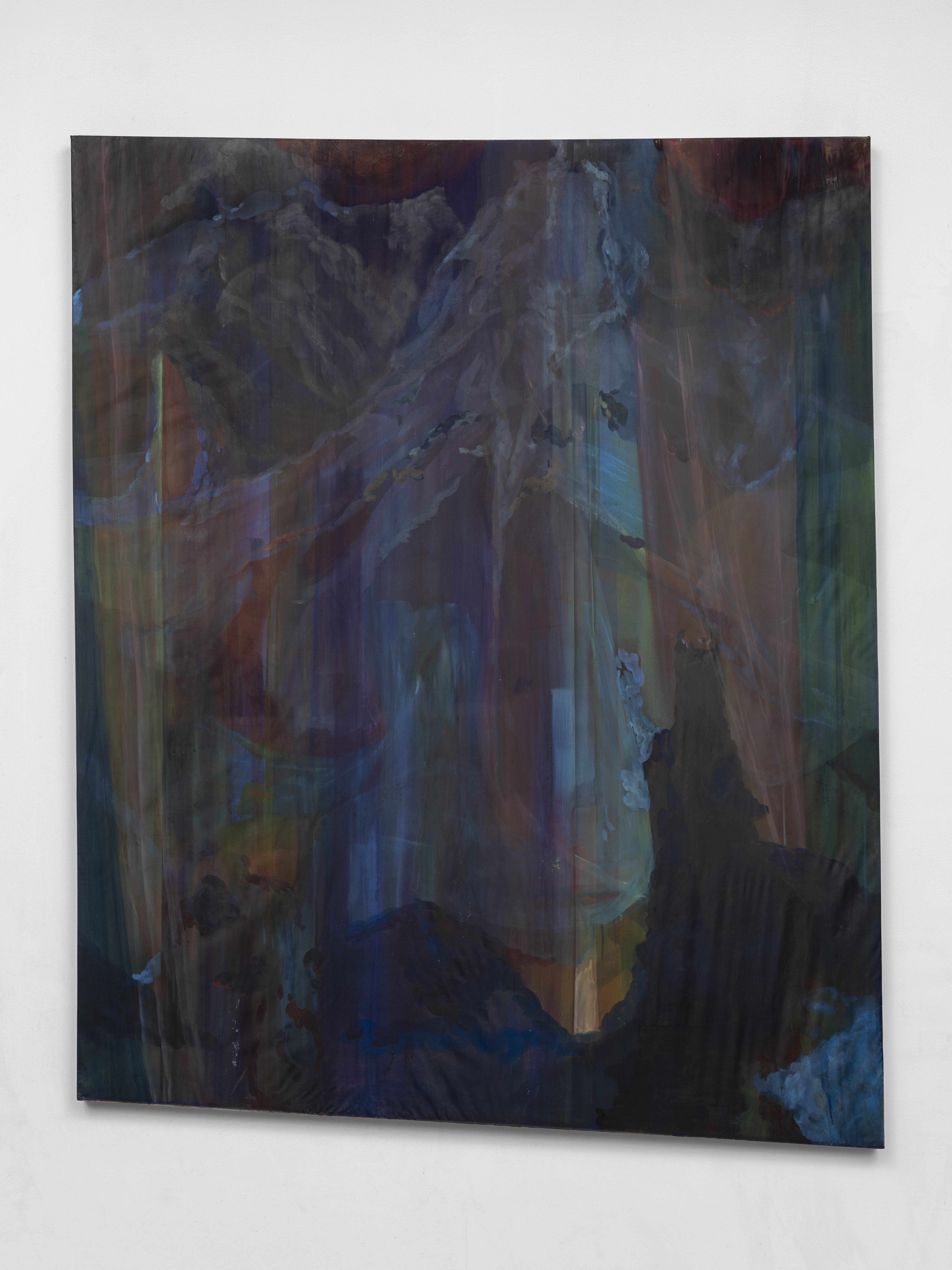Leah Ke Yi Zheng
The Brooklyn Rail May 2023by Hindley Wang


What is Leah Ke Yi Zheng’s work about? It feels like the wrong question to ask, yet it feels more unjust to leave it in an ambiguous aesthetic limbo that is susceptible to taste.
Trained in traditional ink painting in China, Zheng filled most of her early time with ink and her hand with a brush. She made the transition to painting and drawing at the School of the Art Institute of Chicago, halting her pursuit of a law degree. A transcultural background might seem to naturally place her work in a para-category, caught in the “polemic” aesthetic paradigms of the East and West. While the validity of such habitual grouping is up for debate, Zheng’s first solo show in New York does demonstrate an enigmatic oscillation between the mechanical and the organic.
Stretched in neat irregularity, silk is the base of operation for these paintings (all 2023). The recurrent “fuseé” in and out of focus points to an abstraction a tad too particular, whose delicate tonality suggests sedation a bit too exuberant. “Time” seems to be too easy of a grip—a dangerous one even. This semiotic association risks the precarious fugitivity that the artist cultivates in the absence of thematic constraint.
In the untitled painting in black ink over pine wood stretchers, a jagged wheel cuts short at the top border, as if bending the latter awry. Each line is executed with the crisp seal of a pencil drawing, only to be disrupted with anticipated unpredictability: the ink derails, casting wayward shadows, breaching the contract of positive and negative. The excess black ink in some parts congeals in an oily glow, obstructing the solitude of the shadow. Breaking off from the pictorial rendering of an object, a natural autonomy precipitates. The monumentally scaled (at 108 by 85 inches) Untitled stages this aftermath, where the docile drawing of a mechanical part explodes into a vibrant whole—bursting out of the bounds of an object, emulating a phantasmic presence. The rusty sienna and electric greens cast a mystical patina on the edges of the wheel and the surface of the painting, gesturing to a becoming that undermines the objecthood of the engine, while underlining that of the painting itself.
Zheng plays with the indeterminate lines in an ink painting and pushes them to the edges of the frame, in tilts and protrusions, extending the conundrum of the surface to the space. A new ground is levered to embrace the embodied memory in the artist's hand and her craft. The reorientation of scale and rematerialization of the very base for painting constitute a pivotal moment, punctuating a simultaneous departure and return.





And the wheel keeps spinning. This subversive slippage unfastens the fuseé: the engine of time seems to be more of a rumination on the inner workings of orders rather than its face value. The recurrent evocation of the engine dissolves the construct of “time” back to abstraction. Lines defy and corrode, asserting a disordered praxis, where stable knowledge is disillusioned with precarious perception—or is it the other way around?
Behind the gallery window facing Walker Street, Untitled (window) hangs, backside in front, staples exposed to the street. As light shines through the silk screen, the impenetrable surface breaks loose: the backside red bleeds through the discretion of the tensile painting, sustained in the split of unveil and retreat—recuperating a fugitive opacity. Cast as the shadow, inside.

